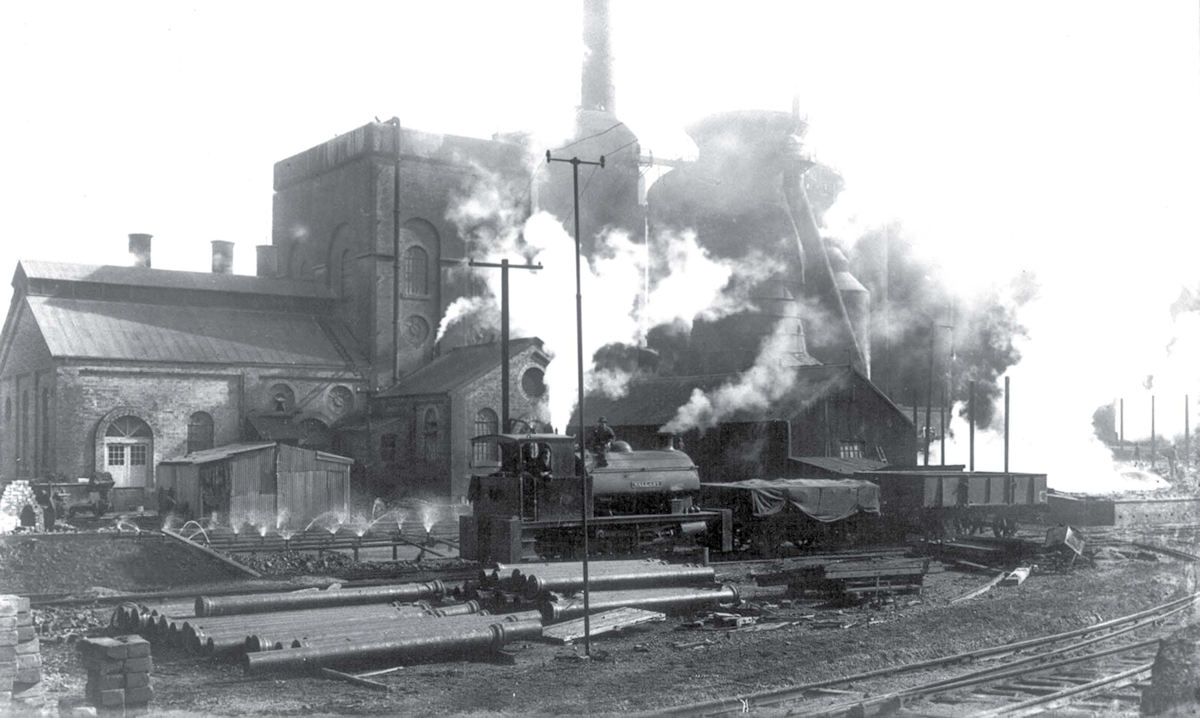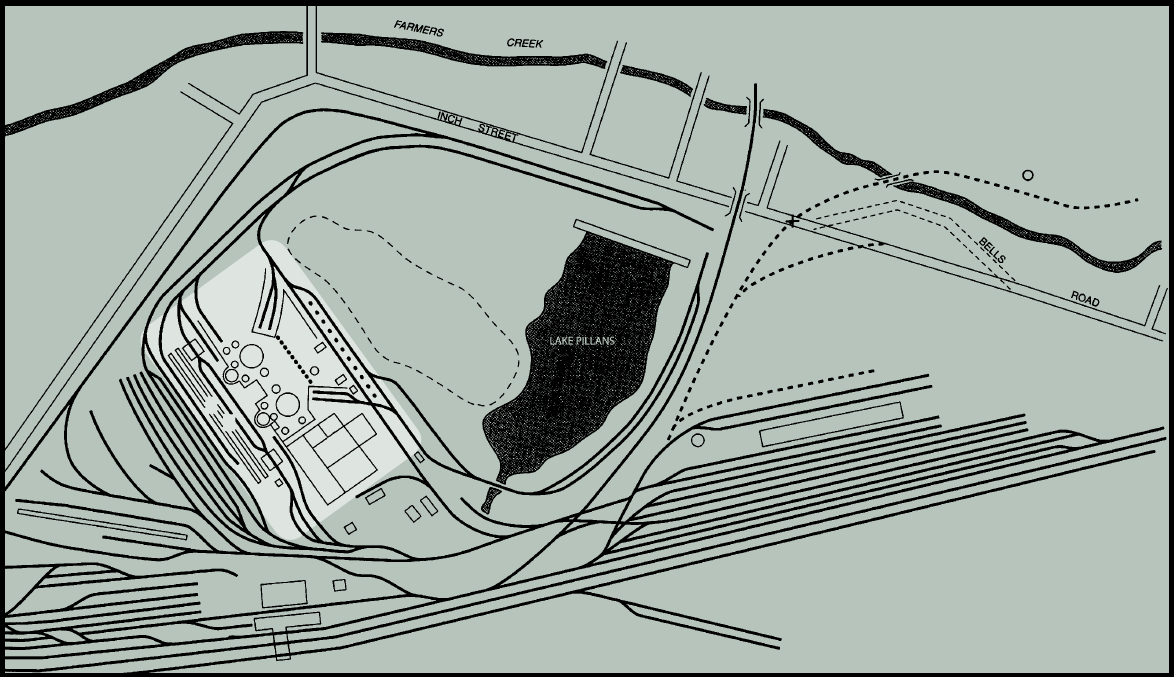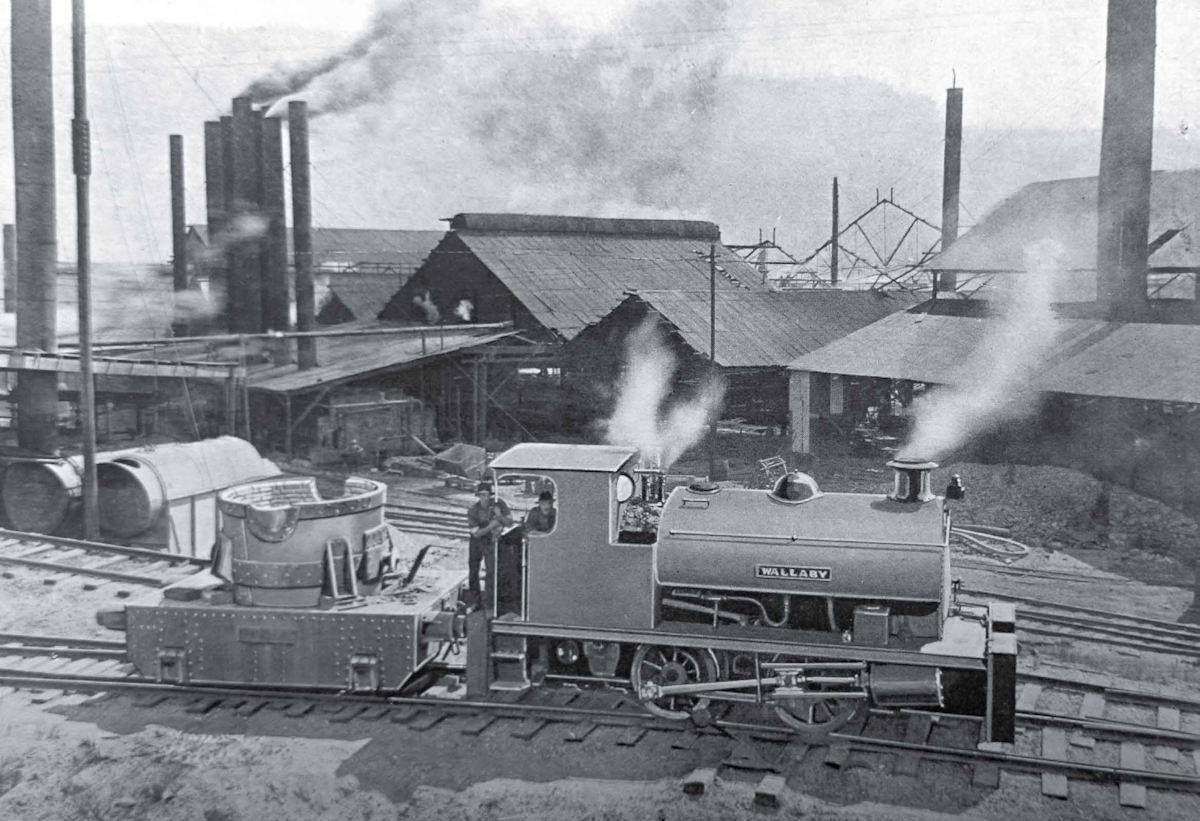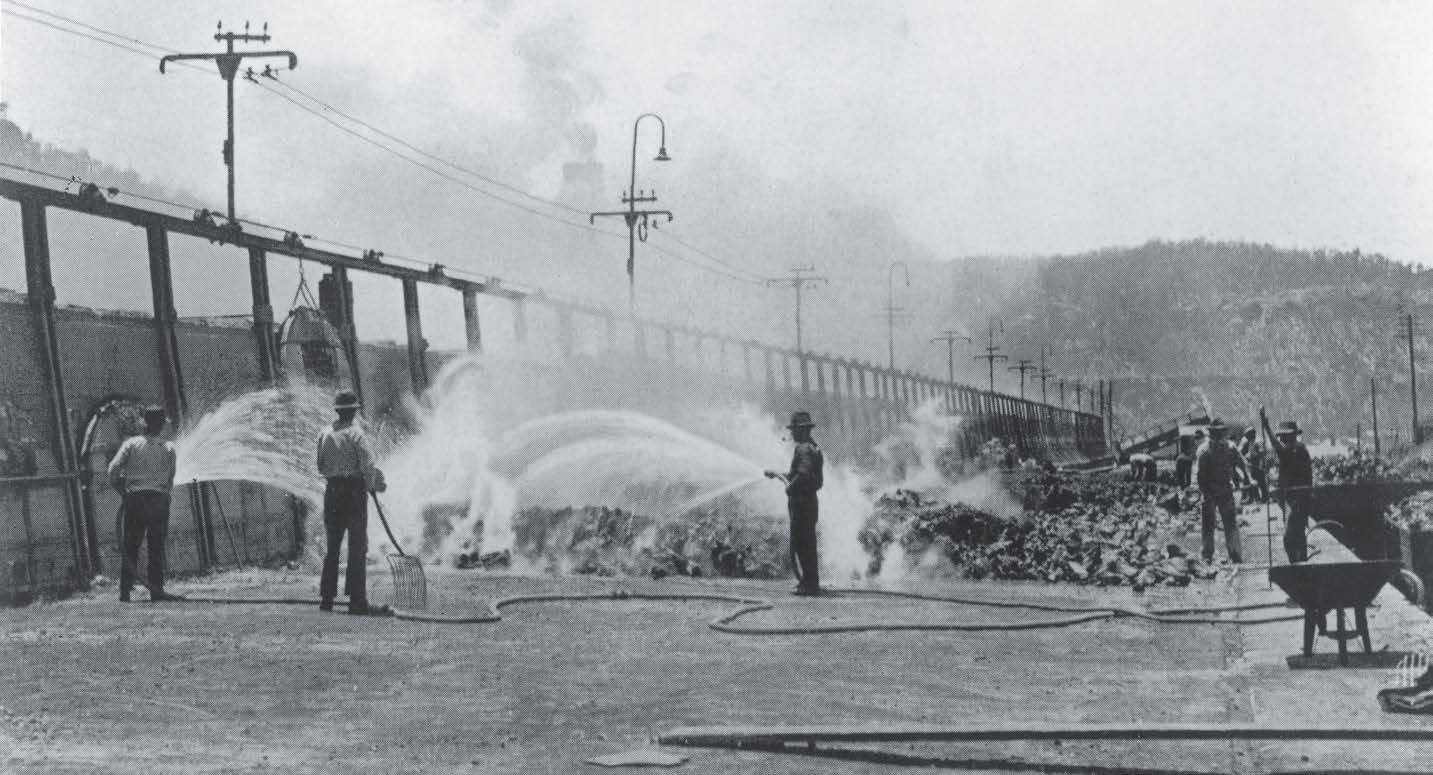
The Lithgow blast furnace in operation c1910 with the
locomotive Wallaby in the foreground. Lithgow Library Learning Centre
Private rail
The railway is an integral part of iron and steel making, transporting massive quantities of raw materials, products and waste.
When William Sandford built the blast furnace on this site in 1906 he constructed a private rail line to connect the plant with the Great Western Railway. This siding was extended in 1907-08, with one line connecting the blast furnace and the pig-beds to the main line. A separate complex of lines brought in raw materials for smelting. A private line to the iron and steel works was constructed in 1911.
It crossed Inch Street and passed Eskbank House (the Grange). Prior to this, a railway line to the steelworks ran from the Eskbank Goods yards.
The Great Western Railway
The railway line from Sydney reached Lithgow in 1869, following completion of the Great Zig Zag. It passed through Thomas Brown’s Esk Bank Estate. The arrival of the railway provided the catalyst for the industrialisation of the Lithgow Valley.
In 1911 ten tunnels and new rail lines replaced the Great Zig Zag, improving access from Mount Victoria to the Lithgow Valley.

Wallaby hauling the 30 tonne hot metal ladle wagon at the steel works, 1913. Hoskins Blue Book 1925
Closing the furnace
When demolition work at the blast furnace began in 1928, most of the rail lines were dismantled. The siding to the iron and steel works, built in 1911, remained operational for coal movements until 1958. Later it was used to access the Nepean Milk Depot until 1974
The Zig Zag Colliery siding closed in 1933. The Lithgow State Coal Mine line was used until the mine closed in 1964, after which it became a maintenance line.
Two locomotives that worked the blast furnace sidings survive today. “Possum” is at Eskbank House and Museum while “Wallaby” was preserved by the Illawarra Light Rail Museum Society at Albion Park.
Molten iron on the track
G&C Hoskins Ltd built the second blast furnace in 1913. The network of sidings was extended around the perimeter of the blast furnace site. Hoskins built another private line so molten iron could be transported, in wheeled ladles weighing 30 tonnes, from the blast
furnace to the iron and steel works. The surviving bridge, over Inch Street, was built in 1911.
Connecting the ovens
Coke ovens were built near the main line, on the eastern side of Lake Pillans, between 1910 and 1915. G&C Hoskins built a rail link to connect the ovens with the main line and the essential, internal link with the blast furnace sidings was completed in 1918.
Men hand-quenching coke in the 1920s at the Lithgow ovens. The coke has just been discharged through the oven door. The worker in the foreground has a hand-fork for loading coke into railway wagons.
NSW Dept of Mineral Resources



